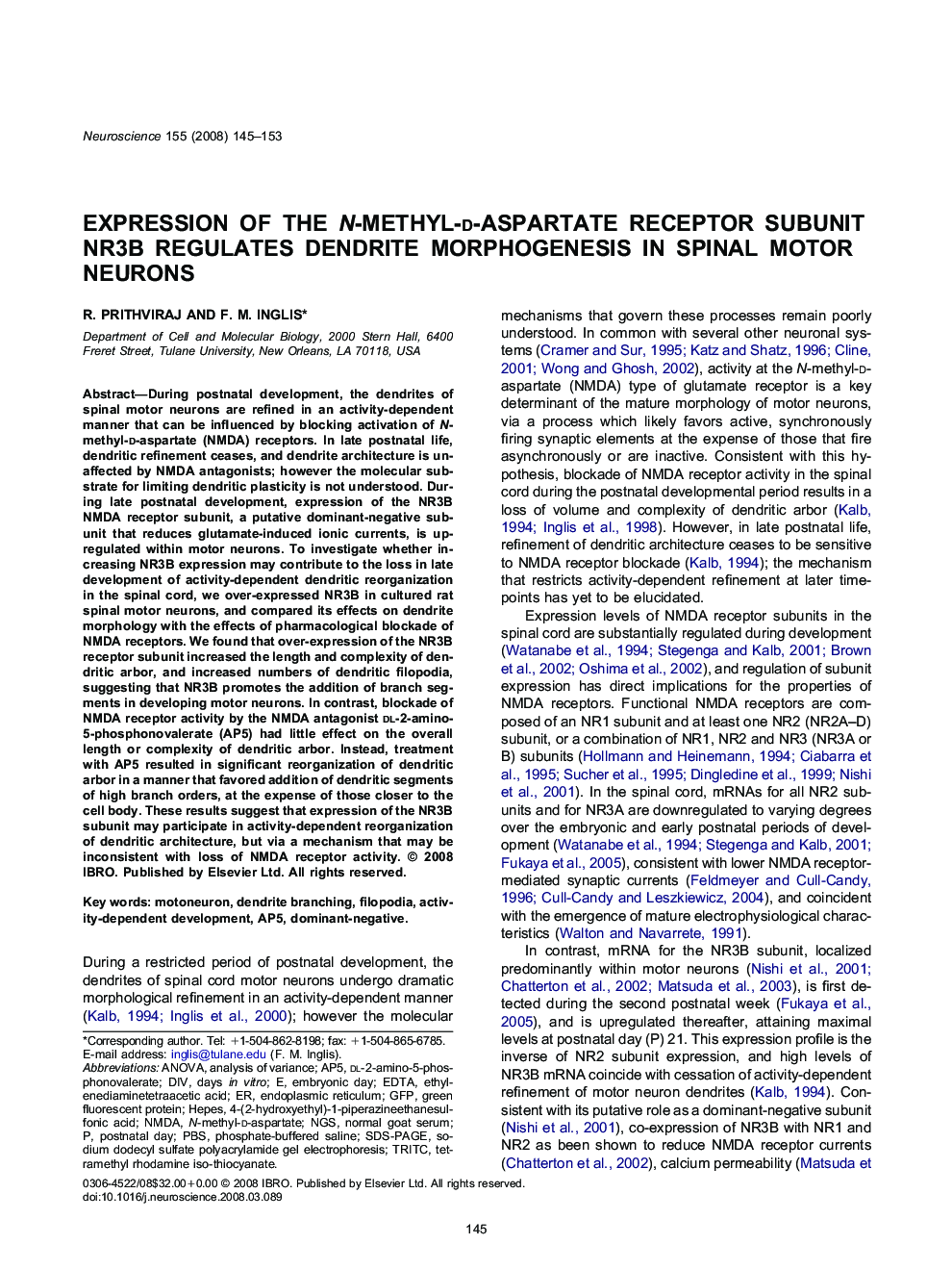| کد مقاله | کد نشریه | سال انتشار | مقاله انگلیسی | نسخه تمام متن |
|---|---|---|---|---|
| 4340486 | 1295798 | 2008 | 9 صفحه PDF | دانلود رایگان |

During postnatal development, the dendrites of spinal motor neurons are refined in an activity-dependent manner that can be influenced by blocking activation of N-methyl-d-aspartate (NMDA) receptors. In late postnatal life, dendritic refinement ceases, and dendrite architecture is unaffected by NMDA antagonists; however the molecular substrate for limiting dendritic plasticity is not understood. During late postnatal development, expression of the NR3B NMDA receptor subunit, a putative dominant-negative subunit that reduces glutamate-induced ionic currents, is upregulated within motor neurons. To investigate whether increasing NR3B expression may contribute to the loss in late development of activity-dependent dendritic reorganization in the spinal cord, we over-expressed NR3B in cultured rat spinal motor neurons, and compared its effects on dendrite morphology with the effects of pharmacological blockade of NMDA receptors. We found that over-expression of the NR3B receptor subunit increased the length and complexity of dendritic arbor, and increased numbers of dendritic filopodia, suggesting that NR3B promotes the addition of branch segments in developing motor neurons. In contrast, blockade of NMDA receptor activity by the NMDA antagonist dl-2-amino-5-phosphonovalerate (AP5) had little effect on the overall length or complexity of dendritic arbor. Instead, treatment with AP5 resulted in significant reorganization of dendritic arbor in a manner that favored addition of dendritic segments of high branch orders, at the expense of those closer to the cell body. These results suggest that expression of the NR3B subunit may participate in activity-dependent reorganization of dendritic architecture, but via a mechanism that may be inconsistent with loss of NMDA receptor activity.
Journal: Neuroscience - Volume 155, Issue 1, 31 July 2008, Pages 145–153